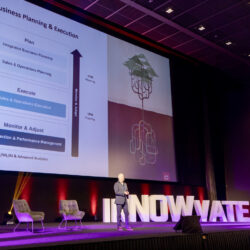No-touch nonsense

Given the rapid advancement in the capabilities of analytical software, the long-held dream of fully automated supply chain planning seems to be within reach at last. According to several consultants at McKinsey, ‘no-touch planning’ will enable a continuous, seamless closed-loop cycle of fully automated planning and re-planning, increasing accuracy and efficiency for both companies and their customers. Meanwhile, visionary consultants at EY are hailing ‘lights-out planning’ as the ultimate supply chain planning phase.
Short-sighted directors of manufacturing companies with large planning departments are drooling over the resounding consultancy promises of no-touch and lights-out planning: “Now we can automate the entire planning department. That will save us a huge number of FTEs. Plus I’ll have a really great digital transformation success story to tell everyone at the golf course!”
According to the overenthusiastic McKinsey consultants, fully implemented no-touch planning eliminates the need for monthly and weekly Sales & Operations Planning (S&OP) or Integrated Business Planning (IBP) planning cycles and enables faster, leaner and better decision-making. As I see it, the S&OP and IBP processes themselves actually support sound decision-making based on volumes and cash, respectively.
Big problem
For no-touch and lights-out planning it will be necessary to create a so-called digital twin or virtual twin of the complete, end-to-end supply chain networks. The big problem is that it is simply impossible for companies to make a simulation model that sufficiently captures the complex reality. Most companies don’t even know all their Tier 2 suppliers. And the market conditions, political developments, customer buying behaviour and competitors’ responses cannot be modelled accurately because companies will never have 100% of the planning data needed.
Alessandro de Luca, Chief Information Officer of pharmaceutical company Merck, has said that the implementation of artificial intelligence has brought valuable benefits for the 100 supply chain planners in his division. Needless to say, there are some supply chain planning processes that can be partially or fully automated, such as store replenishment, but those are all processes for which the necessary information is already available. For complex supply chains, no-touch planning is downright nonsense.
Martijn Lofvers, Chief Trendwatcher Supply Chain Media
martijn.lofvers@supplychainmedia.nl








